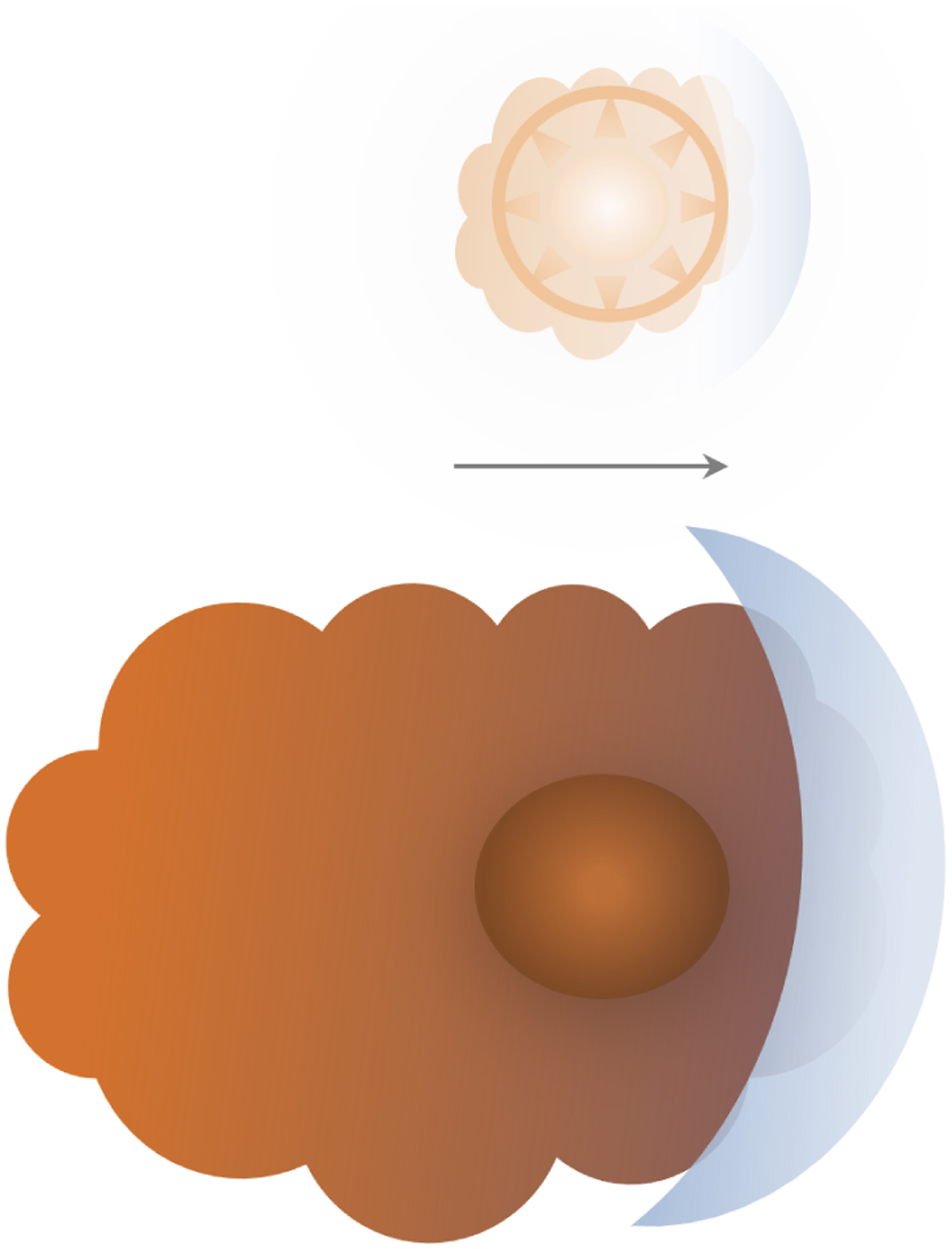Fig. 7

Download original image
Schematic representation of the interaction between the pulsating star and the bow shock. Top: at maximum brightness and minimum polarization, the dust is accelerated from the photosphere in a dense shell (circle) and the mass-loss rate is greatest. The star moves relatively to the interstellar medium in the direction of the arrow. The wind shell is denser than the bow shock (light blue) and dominates the fraction of scattered light. Bottom: around minimum light there is less radiative acceleration, and dust forms in the photosphere, while the mass-loss rate is much smaller. The shell formed at the previous flux maximum has expanded asymmetrically. The cloud-like structure of the dust envelope is supposed to show turbulence. A bow shock (blue) dominates the observed polarization and is incorporated into the smaller density CSM. A lead/lag of the polarization and the light-curve can occur if convection causes the dust density in the line of sight and in the bow shock to develop differently.
Current usage metrics show cumulative count of Article Views (full-text article views including HTML views, PDF and ePub downloads, according to the available data) and Abstracts Views on Vision4Press platform.
Data correspond to usage on the plateform after 2015. The current usage metrics is available 48-96 hours after online publication and is updated daily on week days.
Initial download of the metrics may take a while.


